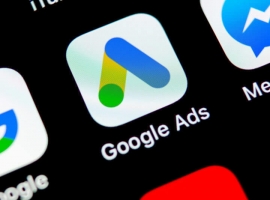Marketers now have a new generally-available ad type for their campaigns: conversational ads.
That’s the result of Google’s launch on Tuesday of its new AdLingo conversational marketing platform, which provides a display ad-like framework into which conversational ads can be placed.
Concurrent with the AdLingo announcement, Google said it was working with three providers of conversational ads: ad/marketing intelligence firm Valassis Digital, conversational commerce provider LivePerson, and chatbot provider Take.
A display ad performing like a messaging app. AdLingo provides the first generally available format for conversational ads outside of messaging apps. “Google provides the ad,” Valassis VP of Strategy Mike Balducci told me, “and we serve the chat.” In essence, he said, Google has built a display ad that performs like a messaging app.
Some history. Previous efforts have included ads on Facebook Messenger and other messaging apps, and IBM’s Watson Ads, which launched in 2016 only on the IBM-owned Weather.com and the Weather Channel app and which have recently been made available for any publisher. IBM’s ads, of course, may offer a deeper and more convincing interaction because it is conversation powered by Watson, the Jeopardy-winning supercomputer.
Balducci noted that his company has been providing conversational ads since 2016, mostly on Messenger, using the Microsoft Bot Framework and the Luis.ai natural language processor.
He added that the responses in Valassis’ AdLingo ads, such as a campaign for Kia, have mostly been canned, with the ad seeking limited info instead of conducting a wide-ranging conversation.
The Kia ads, for instance, question the user about currently owned cars in order to estimate a trade-in value, and offer access to inventory for nearby dealers.
Delivery and cost basis. AdLingo ads are served programmatically through Google’s ad network, and, like most display ads, the cost is impression-based CPM. But the real value to marketers is the user interaction, which could last minutes and for which there is no additional charge.
Why it matters to marketers. While Balducci said he didn’t have any stats yet as to whether conversational ads work better than regular ones, one clear advantage is that marketers can now present conversational ads outside the walls of messaging apps, notably Facebook Messenger, and, until recently, IBM’s Weather properties.
The interaction data received by the brand is essentially the same as has been available through, say, Messenger. But, Balducci added, his initial estimates indicate that the cost of engagement for conversational ads through Google’s AdLingo is lower than on Messenger.
This story first appeared on MarTech Today. For more on marketing technology,
The post Google ushers in the Age of Conversational Ads with the launch of AdLingo appeared first on Marketing Land.
Original article source: https://marketingland.com/feed





There are no comments